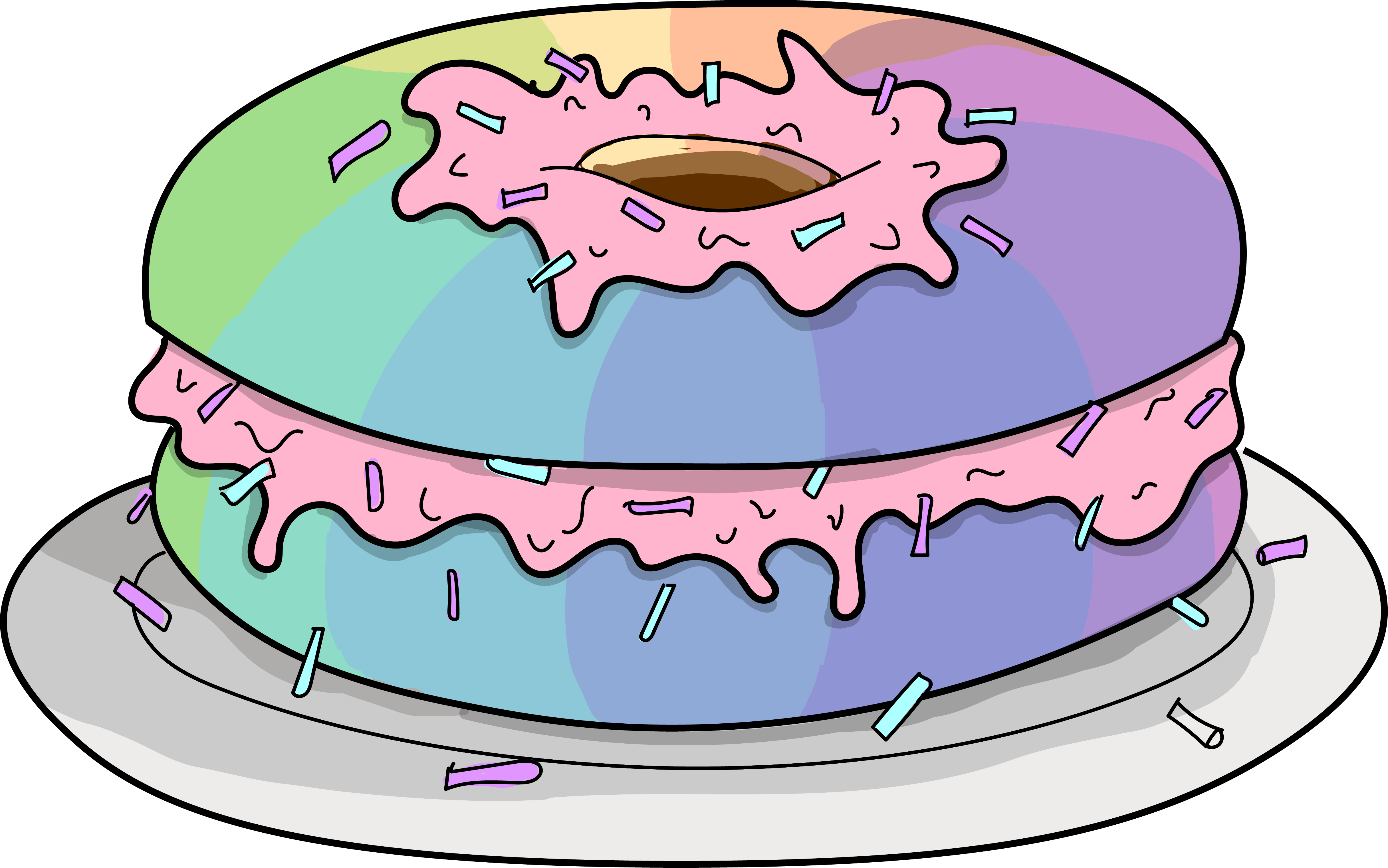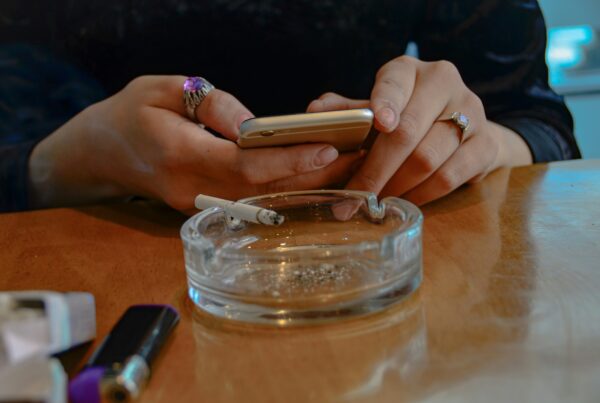
Pictures of unusually coloured food receive a lot of attention on social media, take rainbow bagels, black ice-cream or red velvet cakes. This is not a surprise: visual cues, and especially colour, are one of the most important elements in the perception of food. In this article, we look at the role of colour in what we choose to eat and drink and explore why we are less likely to drink fresh fruit juice if it is brown, even if it tastes perfectly fine, or whether the colour of the plate can change our appetite.
Pictures of unusually coloured food receive a lot of attention on social media, take rainbow bagels, black ice-cream or red velvet cakes. This is not a surprise: visual cues, and especially colour, are one of the most important elements in the perception of food. In this article, we look at the role of colour in what we choose to eat and drink and explore why we are less likely to drink fresh fruit juice if it is brown, even if it tastes perfectly fine, or whether the colour of the plate can change our appetite.

Photo by Chitra Mohanlal

Photo by Chitra Mohanlal
Taste and flavour are the first features we think of when asked what food we like. Although they are used interchangeably in everyday language, there actually is a difference between the two. Taste is the sensation we feel in our mouth with the aid of the receptors from our tongue, while flavour is the combined sensation of smell and taste. They are both very important in what we choose to eat, and surprisingly, they are influenced by our visual perception in fascinating ways. One of the first things we notice about the food presented to us is its colour.
When it comes to the appearance of food, colour can be decisive in whether we eat or avoid it. Based on our previous experiences, we already have expectations about the colours of certain foods: bananas should be yellow, broccoli should be green, and milk should be white. Colour stands out to us not only because of these past associations but also because we have evolved to search for nutritious and non-contaminated food (Armelagos, 2014; König & Renner, 2018). For instance, we know food has gone bad because of its colour, maybe long before we had gotten close enough to smell it, let alone taste it. In theory, we prefer foods whose colour matches our expectations and signals freshness. This idea was tested in a study that manipulated the colours of food according to different stages of food decomposition. It was found that there is a preference for brighter colours, in the sense that people considered foods with higher lightness and saturation to look more delicious (Lee et al., 2013). In light of these results, producers who want, for instance, to sell orange juice, should choose a bright orange colour, rather than a darker shade of orange. Based on the same reasoning, if you want to convince toddlers to eat fruits, you might want to choose those with brighter colours.
“degree of food neophobia and neophilia also plays a role”
Colour is also important when it comes to unfamiliar foods or foods that we are trying for the first time. Intuitively, we tend to think that food combining several colours is more attractive, possibly because this adds complexity and variation. Think of making a salad for someone who never tried bell peppers before. Would you rather choose three of the same colour or a red, green and yellow one? One study found surprising results about the role of colour variation in making food appealing. Zellner, Lankford, Ambrose, and Locher (2010) found that willingness to try and perceived attractiveness of food was increased by colour variety only in dishes whose plate arrangement was balanced (organized around the centre of the plate in a symmetrical manner). In un-balanced arrangements, for instance, when all the food is piled up on one side, participants preferred monochrome dishes (food of a single colour). Interestingly, colourful dishes were rated as more attractive compared to monochrome dishes, but the liking of food was not affected by colour (Zellner et al., 2010).
Furthermore, other studies about colour variety found that people tend to eat more candies and find them tastier if they are of different colours (Rolls, Rowe, & Rolls, 1982) and that people who prefer cooking colourful dishes for themselves tend to eat healthier food (Koning & Renner, 2018). This means that variety in food colour can both be an enemy and a friend when it comes to maintaining healthy eating habits. Since colour variety increases likeability and makes one eat more, it might be good to make sure one has access to healthy options, to begin with.
In addition, another study found that food colour affects liking in a different situation: when we compare familiar and unfamiliar colours. For instance, most of us would expect potatoes to be white or yellow rather than blue. Paakki, Sandell, and Hopia (2014) showed, in an experiment with naturally yellow and blue potatoes, that correctly coloured food (in the sense of matching expectations based on familiarity) increase hedonic response (liking), despite the fact that the taste is the same. When divided according to a preference for either yellow or blue potatoes, yellow potato choosers used naturalness to motivate their choice, while blue potato choosers argued for better appearance. The researches also measured levels of food neophobia, an extreme reluctance to try new foods, and food neophilia, a pronounced preference for new foods. Participants with higher food neophobia rated the pleasantness of blue potatoes lower than participants with neophilia, again bearing in mind that the taste was not different (Paakki et al., 2016). It seems like colour familiarity is important when we evaluate food, but the degree of food neophobia and neophilia also plays a role in whether we appreciate unusually coloured foods.
“when the colour is more intense, the taste and flavour are experienced as more intense too”
Building on the idea of preference for familiar foods, it has been argued that we dislike strangely coloured foods because we associate them with something being not edible. Interestingly, the colour blue has a special status here. Since there are few foods and drinks that are naturally blue, we have little experience with it. Imagine walking into a room and seeing a glass filled with a blue liquid – without any other cues, are you more likely to think that it’s juice or a glass of mouthwash? Researchers think that we find blue foods and drinks unappealing because we do not have a clear flavour or ingredient associated with it. When we do have an association in mind, it could either be a chemical substance that should not be ingested or an association with the appearance of mould, which is sometimes blue (Spence, 2018). Not only blue food but also a blue background while dining, blue lighting or blue trays were found to decrease appetite as reviewed by Spence (2018). This could be of use for those who hope to decrease their appetite. All-you-can eat restaurants or people who are on a diet could take advantage of this effect by using blue coloured plates. In line with the idea that the dislike for blue foods comes from association with artificial or inedible substances, it was found that when the natural source of the dye is emphasized, blue products are more appreciated (Carter, 2011; as cited in Spence, 2018). Nevertheless, blue food products are very much appreciated in pictures, due to their “instagrammable” colour (Elgard, 2018, cited in Spence, 2018). While unusually coloured foods may be popular in images, most people would probably stick to foods whose colours they are used to, when it comes to actual eating habits.
As seen so far, colour creates expectations. At the sight of a jar of red candies, many people would guess their flavour must be of some kind of red fruit such as cherries or strawberries. It is interesting to ask what the relationship between colour and the experience of flavour is – are our expectations based on colour powerful enough to change the perceived flavour? Spence (2015) documented some of the effects of colour on flavour. For one, when the colour is more intense, the taste and flavour are experienced as more intense too (Norton & Johnson 1987, cited in Spence (2015). That means, for example, that adding more food colouring in a fruit yoghurt can actually increase your perception of the fruity flavour. Furthermore, identifying the flavour of food can also be biased by colour. In a study that manipulated the colour of cherry juice, over 20% of the participants mistakenly identified the favour as lime when the colour was green and orange when the colour was orange (DuBose, Cardello, & Maller, 1980, cited in Spence, 2015). Not only the colour of the food but also the colour of the bowl in which it is served was shown to influence taste. Harrar, Piqueras-Fiszman, and Spence (2011) served sweet and salty popcorn in bowls of a different colour. Participants who tasted salty popcorn from red bowls rated it as sweeter than those tasing it from a white bowl. Participants who tasted sweet popcorn from a blue bowl rated the snack as saltier than those tasting the same snack from a white bowl. These results seem counter-intuitive because there was nothing salty in the sweet popcorn and vice-versa – the perception of the other taste was illusory. The authors hypothesised that this might be because of the associations we made in the past. Red could be connected to ripen fruits which are generally sweeter, while blue can be connected with the sea which has salty water (Harrar et al., 2011).
“One explanation for such selective eating behaviors is sensory hypersensitivity to certain colors”
Although less common, colour is a reason for selective eating in disorders such as autism and avoidant food intake disorder (AFID). Stressing the limited research on this matter, Strand (2020) mentions anecdotal evidence or information from case studies about individuals diagnosed with autism or AFID preferring only white foods, choosing to eat only foods covered in red sauce, or eating only food that can be put between two slices of white bread. One explanation for such selective eating behaviors is sensory hypersensitivity to certain colors (Strand, 2020).
Colour seems to play an important role in eating. It can persuade us to try new foods or avoid them. It can affect how much we eat and how tasty we find it. It can even alter our perception when it comes to identifying flavour or judging flavour intensity. It can be a reason for selective eating patterns in mental illnesses. All in all, color guides our eating behaviour more than we think.<<
References
– Armelagos, G. J. (2014). Brain Evolution, the Determinates of Food Choice, and the Omnivore’s Dilemma. Critical Reviews in Food Science and Nutrition, 54(10), 1330–1341.
– Harrar, V., Piqueras-Fiszman, B., & Spence, C. (2011). There’s More to Taste in a Coloured Bowl. Perception, 40(7), 880–882.
– König, L. M., & Renner, B. (2018). Colourful = healthy? Exploring meal colour variety and its relation to food consumption. Food Quality and Preference, 64, 66–71.
– Lee, S.-M., Lee, K.-T., Lee, S.-H., & Song, J.-K. (2013). Origin of human colour preference for food. Journal of Food Engineering, 119(3), 508–515.
– Paakki, M., Sandell, M., & Hopia, A. (2016). Consumer’s Reactions to Natural, Atypically Coloured Foods: An Investigation Using Blue Potatoes: CONSUMER’S REACTIONS TO BLUE POTATOES. Journal of Sensory Studies, 31(1), 78–89.
– Spence, C. (2018). What is so unappealing about blue food and drink? International Journal of Gastronomy and Food Science, 14, 1–8.
– Strand, M. (2020). Eggs, sugar, grated bones: Colour-based food preferences in autism, eating disorders, and beyond. Medical Humanities, medhum-2019-011811.
– Zellner, D. A., Lankford, M., Ambrose, L., & Locher, P. (2010). Art on the plate: Effect of balance and colour on attractiveness of, willingness to try and liking for food. Food Quality and Preference, 21(5), 575–578.
Taste and flavour are the first features we think of when asked what food we like. Although they are used interchangeably in everyday language, there actually is a difference between the two. Taste is the sensation we feel in our mouth with the aid of the receptors from our tongue, while flavour is the combined sensation of smell and taste. They are both very important in what we choose to eat, and surprisingly, they are influenced by our visual perception in fascinating ways. One of the first things we notice about the food presented to us is its colour.
When it comes to the appearance of food, colour can be decisive in whether we eat or avoid it. Based on our previous experiences, we already have expectations about the colours of certain foods: bananas should be yellow, broccoli should be green, and milk should be white. Colour stands out to us not only because of these past associations but also because we have evolved to search for nutritious and non-contaminated food (Armelagos, 2014; König & Renner, 2018). For instance, we know food has gone bad because of its colour, maybe long before we had gotten close enough to smell it, let alone taste it. In theory, we prefer foods whose colour matches our expectations and signals freshness. This idea was tested in a study that manipulated the colours of food according to different stages of food decomposition. It was found that there is a preference for brighter colours, in the sense that people considered foods with higher lightness and saturation to look more delicious (Lee et al., 2013). In light of these results, producers who want, for instance, to sell orange juice, should choose a bright orange colour, rather than a darker shade of orange. Based on the same reasoning, if you want to convince toddlers to eat fruits, you might want to choose those with brighter colours.
“degree of food neophobia and neophilia also plays a role”
Colour is also important when it comes to unfamiliar foods or foods that we are trying for the first time. Intuitively, we tend to think that food combining several colours is more attractive, possibly because this adds complexity and variation. Think of making a salad for someone who never tried bell peppers before. Would you rather choose three of the same colour or a red, green and yellow one? One study found surprising results about the role of colour variation in making food appealing. Zellner, Lankford, Ambrose, and Locher (2010) found that willingness to try and perceived attractiveness of food was increased by colour variety only in dishes whose plate arrangement was balanced (organized around the centre of the plate in a symmetrical manner). In un-balanced arrangements, for instance, when all the food is piled up on one side, participants preferred monochrome dishes (food of a single colour). Interestingly, colourful dishes were rated as more attractive compared to monochrome dishes, but the liking of food was not affected by colour (Zellner et al., 2010).
Furthermore, other studies about colour variety found that people tend to eat more candies and find them tastier if they are of different colours (Rolls, Rowe, & Rolls, 1982) and that people who prefer cooking colourful dishes for themselves tend to eat healthier food (Koning & Renner, 2018). This means that variety in food colour can both be an enemy and a friend when it comes to maintaining healthy eating habits. Since colour variety increases likeability and makes one eat more, it might be good to make sure one has access to healthy options, to begin with.
In addition, another study found that food colour affects liking in a different situation: when we compare familiar and unfamiliar colours. For instance, most of us would expect potatoes to be white or yellow rather than blue. Paakki, Sandell, and Hopia (2014) showed, in an experiment with naturally yellow and blue potatoes, that correctly coloured food (in the sense of matching expectations based on familiarity) increase hedonic response (liking), despite the fact that the taste is the same. When divided according to a preference for either yellow or blue potatoes, yellow potato choosers used naturalness to motivate their choice, while blue potato choosers argued for better appearance. The researches also measured levels of food neophobia, an extreme reluctance to try new foods, and food neophilia, a pronounced preference for new foods. Participants with higher food neophobia rated the pleasantness of blue potatoes lower than participants with neophilia, again bearing in mind that the taste was not different (Paakki et al., 2016). It seems like colour familiarity is important when we evaluate food, but the degree of food neophobia and neophilia also plays a role in whether we appreciate unusually coloured foods.
“when the colour is more intense, the taste and flavour are experienced as more intense too”
Building on the idea of preference for familiar foods, it has been argued that we dislike strangely coloured foods because we associate them with something being not edible. Interestingly, the colour blue has a special status here. Since there are few foods and drinks that are naturally blue, we have little experience with it. Imagine walking into a room and seeing a glass filled with a blue liquid – without any other cues, are you more likely to think that it’s juice or a glass of mouthwash? Researchers think that we find blue foods and drinks unappealing because we do not have a clear flavour or ingredient associated with it. When we do have an association in mind, it could either be a chemical substance that should not be ingested or an association with the appearance of mould, which is sometimes blue (Spence, 2018). Not only blue food but also a blue background while dining, blue lighting or blue trays were found to decrease appetite as reviewed by Spence (2018). This could be of use for those who hope to decrease their appetite. All-you-can eat restaurants or people who are on a diet could take advantage of this effect by using blue coloured plates. In line with the idea that the dislike for blue foods comes from association with artificial or inedible substances, it was found that when the natural source of the dye is emphasized, blue products are more appreciated (Carter, 2011; as cited in Spence, 2018). Nevertheless, blue food products are very much appreciated in pictures, due to their “instagrammable” colour (Elgard, 2018, cited in Spence, 2018). While unusually coloured foods may be popular in images, most people would probably stick to foods whose colours they are used to, when it comes to actual eating habits.
As seen so far, colour creates expectations. At the sight of a jar of red candies, many people would guess their flavour must be of some kind of red fruit such as cherries or strawberries. It is interesting to ask what the relationship between colour and the experience of flavour is – are our expectations based on colour powerful enough to change the perceived flavour? Spence (2015) documented some of the effects of colour on flavour. For one, when the colour is more intense, the taste and flavour are experienced as more intense too (Norton & Johnson 1987, cited in Spence (2015). That means, for example, that adding more food colouring in a fruit yoghurt can actually increase your perception of the fruity flavour. Furthermore, identifying the flavour of food can also be biased by colour. In a study that manipulated the colour of cherry juice, over 20% of the participants mistakenly identified the favour as lime when the colour was green and orange when the colour was orange (DuBose, Cardello, & Maller, 1980, cited in Spence, 2015). Not only the colour of the food but also the colour of the bowl in which it is served was shown to influence taste. Harrar, Piqueras-Fiszman, and Spence (2011) served sweet and salty popcorn in bowls of a different colour. Participants who tasted salty popcorn from red bowls rated it as sweeter than those tasing it from a white bowl. Participants who tasted sweet popcorn from a blue bowl rated the snack as saltier than those tasting the same snack from a white bowl. These results seem counter-intuitive because there was nothing salty in the sweet popcorn and vice-versa – the perception of the other taste was illusory. The authors hypothesised that this might be because of the associations we made in the past. Red could be connected to ripen fruits which are generally sweeter, while blue can be connected with the sea which has salty water (Harrar et al., 2011).
“One explanation for such selective eating behaviors is sensory hypersensitivity to certain colors”
Although less common, colour is a reason for selective eating in disorders such as autism and avoidant food intake disorder (AFID). Stressing the limited research on this matter, Strand (2020) mentions anecdotal evidence or information from case studies about individuals diagnosed with autism or AFID preferring only white foods, choosing to eat only foods covered in red sauce, or eating only food that can be put between two slices of white bread. One explanation for such selective eating behaviors is sensory hypersensitivity to certain colors (Strand, 2020).
Colour seems to play an important role in eating. It can persuade us to try new foods or avoid them. It can affect how much we eat and how tasty we find it. It can even alter our perception when it comes to identifying flavour or judging flavour intensity. It can be a reason for selective eating patterns in mental illnesses. All in all, color guides our eating behaviour more than we think.<<



